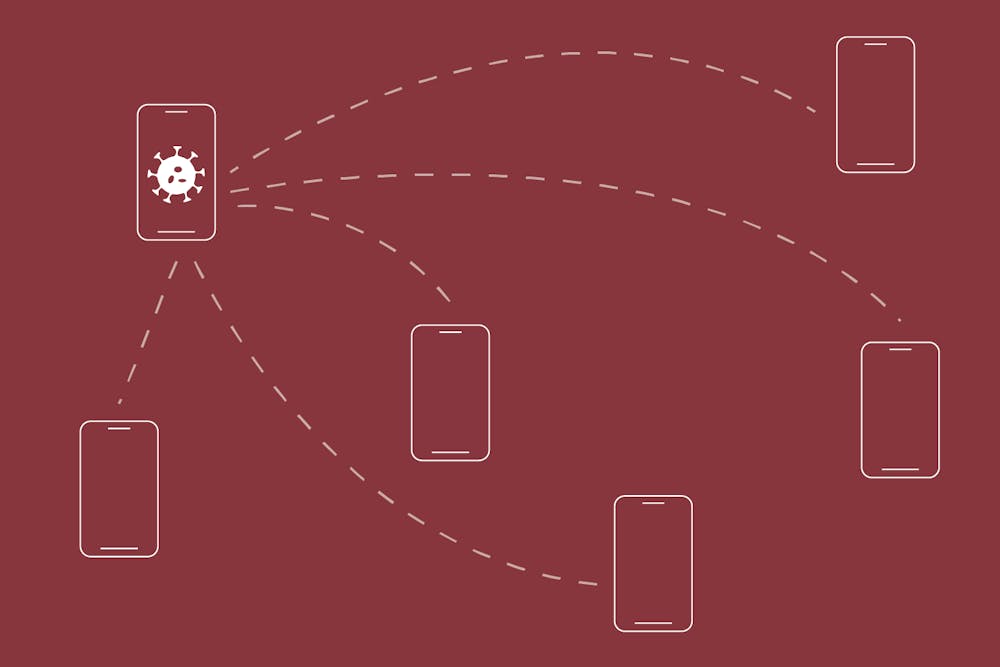Even as Penn's campus remains largely shuttered, the University's Student Health Services departments are busy with COVID-19 prevention protocols, spearheaded by weekly testing and contact tracing initiatives.
Contact tracing — a process that can help slow the spread of an infectious disease — at Penn is nothing new, as the University has had a team in place for years to deal with mumps outbreaks. Now, in response to the COVID-19 pandemic, which Chief Wellness Officer Benoit Dubé described as a "totally different beast than mumps," Penn has expanded and reworked its contact tracing team to be more efficient in the larger-scale pandemic.
Here is everything you need to know about Penn's COVID-19 contact tracing effort:
What does Penn's contact tracing program entail?
When a student tests positive for COVID-19, one of Penn's contact tracers calls them immediately following the positive result, usually holding a conversation that lasts anywhere from 20 minutes to an hour.
Director of Campus Health Ashlee Halbritter said the contact tracer will ask the COVID-19 positive individual to list all people they have come into contact with for a few days prior to the positive result.
Students are asked to list friends, roommates, and intimate partners they have seen recently, as well as trips to the grocery store, uses of public transportation, and all other trips outside of their home.
After a student identifies someone they came into contact with, the contact tracer inquires about specifics, including whether the interaction was indoors or outdoors, if masks were worn, if it was within six feet, its length, and if food was shared.
RELATED:
Penn to announce extended COVID-19 testing and Greek Life-specific mitigation strategies
At least 42 Penn students tested positive for COVID-19 on campus in the past two weeks
Halbritter said the more details a student is able to provide, the better the contact tracing team can asses contacts' level of risk.
What happens if you get a call from a contact tracer?
First and foremost, students should pick up, Halbritter said.
After speaking with the student who has tested positive, the contact tracing team puts all the information about each contact into an algorithm to determine the risk each contact has.
Contact tracers will then call these students, as well as send them a message through the SHS's secure messaging portal. Contact tracers explain to the student that they have come into contact with someone who has tested positive for COVID-19 — without telling them who exactly has tested positive for anonymity purposes — and offer to answer any questions regarding next steps depending on risk level.
Halbritter emphasized that the phone call and contact tracing process are not punitive and the more information a student provides regarding their current symptoms and contacts, the better.
"Being notified that you have come into contact with someone who tested positive is not punitive. You often cannot control who you come into contact with," Halbritter said.
Who is on Penn's contact tracing team?
Penn's contact tracing team — which was originally created to address the mumps outbreak — consists of ten staff members, but another ten to 15 members are currently being onboarded, according to Halbritter.
Halbritter said the staff includes recent Penn graduates, staff from other departments outside of Campus Health who have been retrained and deployed as contact tracers, along with new hires who had previously worked as contact tracers for other institutions.
Halbritter said that when assembling the team, it was of the utmost importance to build a diverse team that reflects Penn's student body.
Has contact tracing been successful?
Halbritter said that the contact tracing team has worked effectively thus far and she expects it to continue to be productive.
"The contact tracing program has worked very well so far," she said. "Its success as well as Penn's low positivity rate is a testament to Penn students following guidelines and for that I want to offer a big thank you to Penn students."









